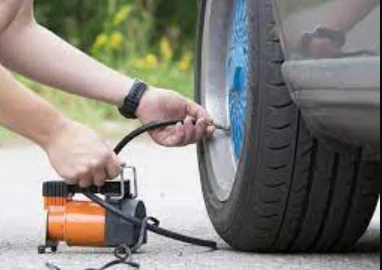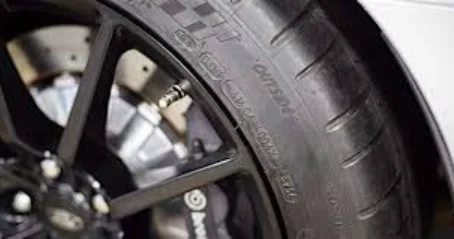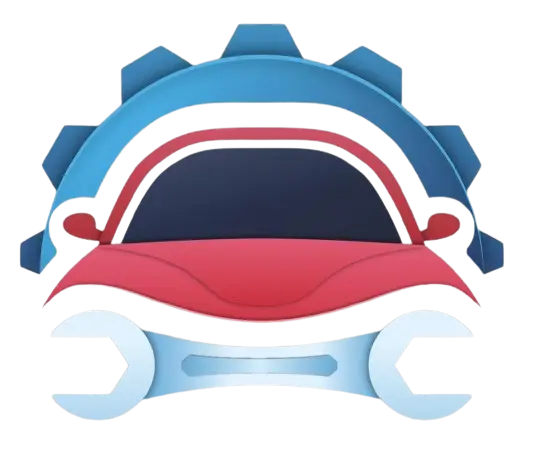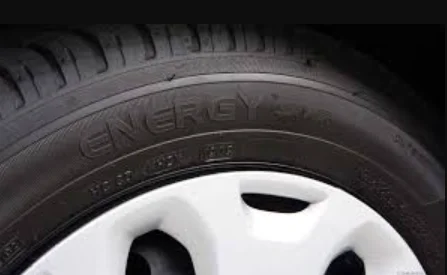Proper tyre pressure is crucial for every vehicle, and your 2009 Ford Fiesta is no exception.
Maintaining the recommended levels isn’t just about ensuring a smooth, safe ride, it’s also key for optimal fuel efficiency, tyre longevity, and even preventing costly repairs.
This comprehensive guide equips you with all the knowledge you need to keep your Fiesta’s tyres pumped up for peak performance.
Recommended Tyre Pressure 2009 Ford Fiesta
| Engine | Tyre size | Front pressure | Rear pressure | Front loaded pressure | Rear loaded pressure |
| 1 | 195 45 R16 80H | 36 | 26 | 41 | 46 |
| 1 | 195 50 R15 82H | 33 | 26 | 38 | 46 |
| 1 | 195 50 R16 84H | 33 | 26 | 38 | 46 |
| 1 | 195 55 R15 85H | 33 | 26 | 38 | 46 |
| 1 | 205 40 R17 80H | 36 | 26 | 41 | 41 |
| 1.0 EcoBoost | 205 40 R17 84V XL | 39 | 28 | 41 | 36 |
| 1.2 | 175 65 R14 82T | 33 | 26 | 38 | 46 |
| 1.2 | 195 45 R16 80H | 36 | 26 | 38 | 46 |
| 1.2 | 195 50 R15 82T | 33 | 26 | 38 | 46 |
| 1.2 | 195 50 R16 84H | 30 | 26 | 38 | 38 |
| 1.2 | 195 55 R15 85T | 33 | 26 | 38 | 46 |
| 1.2 | 205 40 R17 80H | 36 | 26 | 41 | 41 |
| 1.3 8V | 175 65 R14 82T | 30 | 26 | 36 | 41 |
| 1.3 8V | 195 45 R16 80H | 30 | 29 | 33 | 38 |
| 1.3 8V | 195 50 R15 82H | 29 | 26 | 36 | 41 |
| 1.4 | 195 45 R16 80H | 33 | 26 | 38 | 38 |
| 1.4 | 195 50 R15 82T | 33 | 26 | 38 | 46 |
| 1.4 | 195 50 R16 84H | 33 | 26 | 38 | 46 |
| 1.4 | 195 55 R15 85T | 33 | 26 | 38 | 46 |
| 1.4 | 205 40 R17 80H | 36 | 26 | 41 | 41 |
| 1.4 LPG | 195 50 R16 84T | 30 | 26 | 38 | 46 |
| 1.4 LPG | 195 55 R15 85T | 30 | 26 | 38 | 46 |
| 1.6 16V | 175 65 R14 82H | 30 | 26 | 36 | 41 |
| 1.6 16V | 195 45 R16 80V | 30 | 29 | 33 | 38 |
| 1.6 16V | 195 50 R15 82H | 29 | 26 | 36 | 41 |
| 1.6 ST Turbo | 205 40 R17 84W XL | 36 | 26 | 41 | 41 |
| 1.6 Ti-VCT Sport | 195 45 R16 84V XL | 36 | 26 | 41 | 46 |
| 1.6 Ti-VCT Sport | 205 40 R17 84V XL | 36 | 26 | 41 | 41 |
| 2.0 ST 150 | 195 45 R16 80V | 32 | 29 | 33 | 38 |
| 2.0 ST 150 | 205 40 ZR17 XL | 32 | 29 | 36 | 41 |
Consequences of Incorrect Tyre Pressure
Driving with underinflated or overinflated tyres can lead to adverse consequences. Underinflated tyres may cause poor fuel efficiency, uneven tread wear, and compromised handling.

On the other hand, overinflated tyres can result in a harsher ride, reduced traction, and increased risk of blowouts.
How to Check Tyre Pressure
Regularly checking your Ford Fiesta’s tyre pressure is a simple yet effective way to ensure optimal performance.
Use a reliable tyre pressure gauge and check the pressure when the tyres are cool. Remember to include the spare tyre in your routine checks.
Adjusting Tyre Pressure
If adjustments are necessary, use an air compressor or visit a service station. Ensure that all four tyres, including the spare, are inflated to the recommended pressure.

Regularly check and adjust the pressure to accommodate changes in temperature and driving conditions.
Importance of Correct Pressure
Maintaining the right tyre pressure offers a multitude of benefits:
- Enhanced Safety: Properly inflated tyres improve handling, grip, and braking performance, minimizing the risk of accidents.
- Fuel Efficiency: Underinflated tyres create higher rolling resistance, leading to increased fuel consumption. Keeping them pumped up saves you money at the pump.
- Tyre Longevity: Correct pressure ensures even wear and tear, extending the lifespan of your tyres.
- Reduced Emissions: Underinflated tyres contribute to higher emissions. Optimal pressure reduces your environmental impact.
Checking and Adjusting Pressure
- Invest in a reliable tyre pressure gauge.
- Remove the valve cap and press the gauge firmly onto the valve stem.
- Note the reading and compare it to the recommended pressure.
- If the pressure is low, inflate the tyre at a reputable gas station or tyre shop.
- Don’t forget the spare tyre! Regularly check and adjust its pressure as well.
Tips for Maintaining Pressure
- Check your tyre pressure at least once a month, and more frequently during extreme weather conditions.
- Consider investing in a Tyre Pressure Monitoring System (TPMS) for real-time pressure readings.
- Adjust pressure after significant temperature changes or heavy loading.
Conclusion
Maintaining the correct tyre pressure in your 2009 Ford Fiesta is a simple yet vital practice. By following the guidelines in this guide, you can enjoy a safer, more fuel-efficient, and ultimately more enjoyable driving experience.
Remember, keeping your tyres pumped up is an investment in your car’s performance, longevity, and your own peace of mind.
FAQs
- Q: What happens if my tyre pressure is too high or too low?
Overinflated tyres can lead to premature wear and tear on the center of the tread, while underinflated tyres can cause uneven wear on the shoulders and reduce handling and fuel efficiency.
- Q: Can I use a sealant instead of checking and adjusting pressure regularly?
Sealants are temporary solutions and should not replace regular pressure checks and maintenance.
- Q: Where can I find my specific tyre pressure recommendations?
Consult your owner’s manual or the tyre pressure sticker inside the driver’s door jamb or glove compartment.


